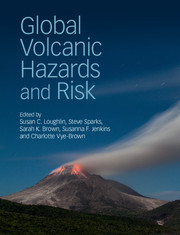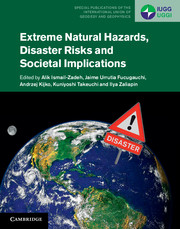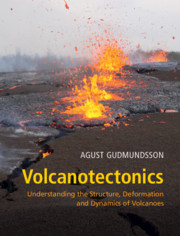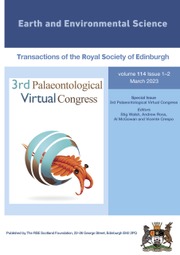Global Volcanic Hazards and Risk
Originally prepared for the United Nations Office for Disaster Risk Reduction, this is the first comprehensive assessment of global volcanic hazards and risk, presenting the state of the art in our understanding of global volcanic activity. It examines our assessment and management capabilities, and considers the preparedness of the global scientific community and government agencies to manage volcanic hazards and risk. Particular attention is paid to volcanic ash, the most frequent and wide-ranging volcanic hazard. Of interest to government officials, the private sector, students and researchers, this book is a key resource for the disaster risk reduction community and for those interested in volcanology and natural hazards. A non-technical summary is included for policy makers. Regional volcanic hazard profiles, with invaluable information on volcanic hazards and risk at the local, national and global scale, are provided online. This title is available as an Open Access eBook via Cambridge Books Online.
- Provides a profile of volcanic hazard and risk for every country in the world that has active volcanoes, accessed via www.cambridge.org/volcano, providing more detail on the numbers, distribution, style and history of volcanoes in each country, as well as identifying how many people, roads, airports and ports are threatened by volcanic activity
- Involves extensive collaboration from the volcanological community, with contributions from world-leading experts
- Also published in Open Access, to enable maximum dissemination of an important and topical subject matter
Reviews & endorsements
'Global Volcanic Hazards and Risks is an excellent state-of-the-art summary of the knowledge and practice of volcanic risk. It is also a call to action: it clearly reminds us that there is still a huge amount of work to be done in understanding the hazards and risks of the world's active volcanoes. … The book is very accessibly written and could easily serve as a text for undergraduate and graduate classes in volcanology and volcanic hazards; the latter particularly benefiting from the compiled databases, the range of methods in the case studies and the cited literature. This book is a key resource for those interested in volcanology and natural hazards as well as for the disaster risk reduction community, policy makers, and the generally interested reader.' Shan de Silva, Elements
'This volume is the first 'comprehensive assessment' of worldwide knowledge about the hazards and risks associated with active and dormant volcanoes. It is a massive collaborative effort by the international volcanological community (over 130 scientists from 86 organizations in approximately 50 countries) for the primary purpose of preparing for environmental disasters and saving lives. Currently, essential information about more than 80 percent of the world's active volcanoes is lacking, and more than a billion lives are in direct danger … The importance of this encyclopedic book for all workers in volcanic regions cannot be overestimated.' T. L. T. Grose, Choice
'With some exceptions, this largely descriptive text appears to be aimed at a non-technical audience, and thus provides a thorough grounding on the essential topics related to estimating volcanic risk. … The most salient point of the book is the numerous case studies of volcanic hazards and risk management strategies, which present an invaluable framework for policy makers and those wishing to understand the decision-making process. … In addition to providing a detailed analytical framework for volcanic hazards, this book also contains many useful tables and figures of data, which are clearly presented and well organized. … The wealth of figures and diagrams, and the general lack of confusing technical jargon make this a highly accessible text to those without a geological background, while also providing helpful and practical insights to those who already understand the basics.' Claire L. Cooper, American Mineralogist
Product details
August 2015Hardback
9781107111752
408 pages
290 × 225 × 28 mm
1.27kg
129 colour illus. 32 tables
Available
Table of Contents
- 1. An introduction to global volcanic hazard and risk S. C. Loughlin, C. Vye-Brown, R. S. J. Sparks, S. K. Brown, J. Barclay, E. Calder, E. Cottrell, G. Jolly, J.-C. Komorowski, C. Mandeville, C. Newhall, J. Palma, S. Potter, G. Valentine, B. Baptie, J. Biggs, H. S. Crosweller, E. Ilyinskaya, C. Kilburn, K. Mee and M. Pritchard
- 2. Global volcanic hazard and risk S. K. Brown, S. C. Loughlin, R. S. J. Sparks, C. Vye-Brown, J. Barclay, E. Calder, E. Cottrell, G. Jolly, J.-C. Komorowski, C. Mandeville, C. Newhall, J. Palma, S. Potter, G. Valentine, B. Baptie, J. Biggs, H. S. Crosweller, E. Ilyinskaya, C. Kilburn, K. Mee and M. Pritchard
- 3. Volcanic ash fall hazard and risk S. F. Jenkins, T. M. Wilson, C. Magill, V. Miller, C. Stewart, R. Blong, W. Marzocchi, M. Boulton, C. Bonadonna and A. Costa
- 4. Populations around Holocene volcanoes and development of a Population Exposure Index S. K. Brown, M. R. Auker and R. S. J. Sparks
- 5. An integrated approach to Determining Volcanic Risk in Auckland, New Zealand: the multidisciplinary DEVORA project N. I. Deligne, J. M. Lindsay and E. Smid
- 6. Tephra fall hazard for the Neapolitan area W. Marzocchi, J. Selva, A. Costa, L. Sandri, R. Tonini and G. Macedonio
- 7. Eruptions and lahars of Mount Pinatubo, 1991–2000 C. G. Newhall and R. Solidum
- 8. Improving crisis decision-making at times of uncertain volcanic unrest (Guadeloupe, 1976) J.-C. Komorowski, T. Hincks, R. S. J. Sparks, W. Aspinall and CASAVA ANR project consortium
- 9. Forecasting the November 2010 eruption of Merapi, Indonesia J. Pallister and Surono
- 10. The importance of communication in hazard zone areas: case study during and after 2010 Merapi eruption, Indonesia S. Andreastuti, J. Subandriyo, S. Sumarti and D. Sayudi
- 11. Nyiragongo (Democratic Republic of Congo), January 2002: a major eruption in the midst of a complex humanitarian emergency J.-C. Komorowski and K. Karume
- 12. Volcanic ash fall impacts T. M. Wilson, S. F. Jenkins and C. Stewart
- 13. Health impacts of volcanic eruptions C. Horwell, P. Baxter and R. Kamanyire
- 14. Volcanoes and the aviation industry P. W. Webley
- 15. The role of volcano observatories in risk reduction G. Jolly
- 16. Developing effective communication tools for volcanic hazards in New Zealand, using social science G. Leonard and S. Potter
- 17. Volcano monitoring from space M. Poland
- 18. Volcanic unrest and short-term forecasting capacity J. Gottsmann
- 19. Global monitoring capacity: development of the Global Volcano Research and Monitoring Institutions Database and analysis of monitoring in Latin America N. Ortiz Guerrero, S. K. Brown, H. Delgado Granados and C. Lombana Criollo
- 20. Volcanic hazard maps E. Calder, K. Wagner and S. E. Ogburn
- 21. Risk assessment case history: the Soufrière Hills Volcano, Montserrat W. Aspinall and G. Wadge
- 22. Development of a new global Volcanic Hazard Index (VHI) M. R. Auker, R. S. J. Sparks, S. F. Jenkins, S. K. Brown, W. Aspinall, N. I. Deligne, G. Jolly, S. C. Loughlin, W. Marzocchi, C. G. Newhall and J. L. Palma
- 23. Global distribution of volcanic threat S. K. Brown, R. S. J. Sparks and S. F. Jenkins
- 24. Scientific communication of uncertainty during volcanic emergencies J. Marti
- 25. Volcano Disaster Assistance Program: preventing volcanic crises from becoming disasters and advancing science diplomacy J. Pallister
- 26. Communities coping with uncertainty and reducing their risk: the collaborative monitoring and management of volcanic activity with the Vigías of Tungurahua J. Stone, J. Barclay, P. Ramon, P. Mothes and STREVA.







